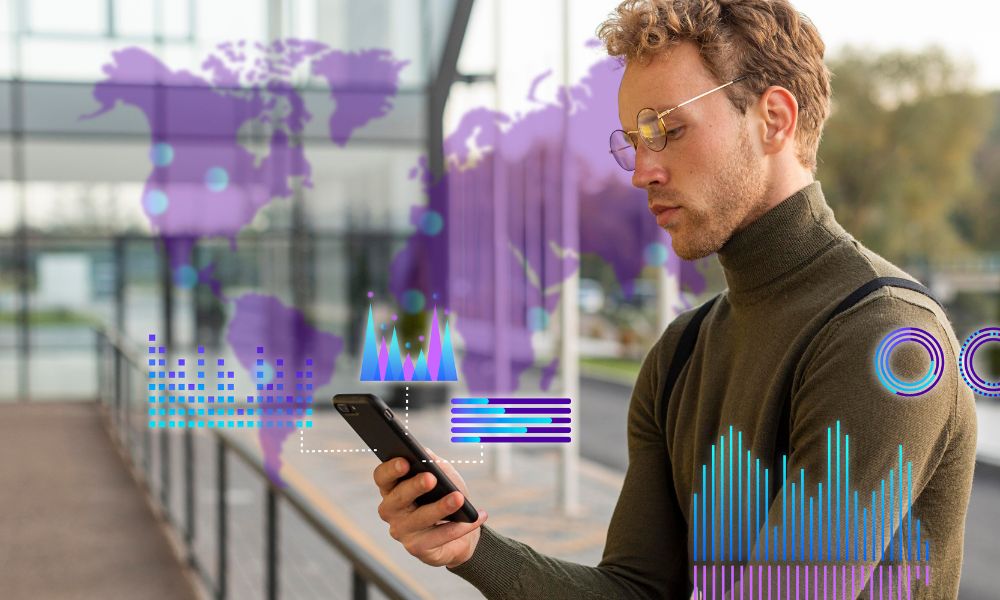Measuring the success of influencer marketing has moved far beyond likes and shares. Today, brands need to prove impact, not just visibility. Whether your goal is to raise brand awareness, drive traffic, or boost conversions, having a clear influencer marketing measurement framework is essential.
In this guide, we’ll break down the key metrics, KPIs, and tools you need to track real performance. From campaign engagement rates to revenue attribution, you’ll learn how to align measurement with your marketing goals and report results that matter. No fluff, just practical steps to help you turn influencer campaigns into data-driven wins.

Why Influencer Marketing Goals Are the Foundation of Accurate Measurement
Before you start tracking any numbers, you need to know what success looks like. Setting clear goals is the first and most important step in influencer marketing measurement. Without well-defined objectives, you’re just collecting data without context.
“You can’t measure what you don’t define.” Every influencer campaign should begin with a simple question: What are we trying to achieve? Your business goals should guide which metrics to track and how you interpret results. If your objective is to build awareness, impressions and reach are far more important than conversions. If you’re aiming for direct sales, then ROI and revenue data take center stage.
When goals are clear, it becomes much easier to connect campaign performance to real outcomes. This also helps align your team and the influencers you’re working with, so everyone knows what success means.
The 4 Primary Goals of Influencer Marketing
While each campaign may be unique, most fall into one or more of the following goal categories:
1. Brand Awareness & Reach: This goal is about getting your name out there. You’re looking to introduce your brand or product to a wider audience. Key metrics here include impressions, reach, video views, and social media mentions.
2. Audience Engagement & Trust: Engagement is a sign that your content resonates. Metrics like likes, comments, saves, shares, and follower growth help show whether people are connecting with the message. Higher engagement often reflects deeper trust and stronger audience interest.
3. Website Traffic & Lead Generation: If the goal is to drive users to your website or landing page – trackable links, UTMs, and click-through rates are essential. You may also track sign-ups, downloads, or other lead-related actions that happen after a user clicks.
4. Sales & Conversions: This is often the most straightforward business goal. Whether you’re tracking purchases, subscriptions, or other conversions, the key is to connect influencer activity with real transactions. Tools like affiliate links, promo codes, and platform integrations can help track these results.
The Influencer Marketing Measurement Framework: Key Metrics to Measure
Measuring influencer marketing effectively requires looking beyond likes and follower counts. A structured framework helps you understand not just what happened, but why it happened and what value it brought to your business.
Tier 1: Campaign Performance Metrics (The “What Happened?”)
These metrics show how your influencer content performed during the campaign. They focus on visibility, interaction, and initial user response:
- 1. Reach & Impressions: Reach shows how many unique users saw the content. Impressions reflect how many times it was displayed, even if the same person saw it more than once. These metrics are essential for brand awareness campaigns and help you estimate your potential audience size.
- 2. Engagement Rate (The Right Way): A high engagement rate means people are actively responding to the content, not just scrolling past it. Use this formula:
(Likes + Comments + Saves + Shares) / Followers / Impressions * 100.
This gives a more complete picture than simply looking at likes or comments alone. It tells you how well the content is actually connecting with the audience. - 3. Click-Through Rate (CTR): CTR measures how many people clicked on a link after seeing the content. It’s a great way to track interest and intent, especially for campaigns designed to drive traffic to a landing page or product page.
Tier 2: Audience & Sentiment Metrics (The “Who and How?”)
These metrics look at who is engaging and how they feel about your brand. They give you deeper insight into your audience and the emotional impact of the campaign.
- 1. Audience Quality & Growth: It’s not just about gaining followers. You want to attract the right ones. Analyze follower authenticity, demographics, and whether the influencer’s audience matches your ideal customer. Also track how much your brand’s own audience grows during and after the campaign.
- 2. Sentiment Analysis: Look beyond the number of comments and track the tone of what people are saying. Are the mentions positive, negative, or neutral? Sentiment analysis helps you understand how your brand is being perceived and whether the campaign influenced that perception.
- 3. Share of Voice: This metric compares how often your brand is mentioned in comparison to competitors during the campaign period. It shows how much space your campaign occupies in the online conversation within your industry or niche.
Tier 3: Conversion & Revenue Metrics (The “What’s the ROI?”)
These metrics connect influencer marketing to bottom-line results. They are especially important when your goal is lead generation or sales.
- Conversion Rate: This tells you how many users took a desired action, such as signing up for a newsletter, adding a product to cart, or completing a purchase. It’s one of the most direct indicators of campaign success.
- Sales Revenue & Return on Ad Spend (ROAS): Track the total revenue generated from influencer-driven traffic. ROAS helps you understand how much you earned for every dollar spent. For example, a ROAS of 4.5 means you earned $4.50 for every $1 spent on the campaign.
- Earned Media Value (EMV): EMV estimates how much the influencer-generated content would have cost if you paid for the same reach and engagement through traditional advertising. It’s a useful comparison metric, but should be used alongside others to get the full picture. Keep in mind that EMV values can vary by industry and platform.

How to Measure ROI of Influencer Marketing Campaigns
Calculating return on investment (ROI) is one of the most important parts of any influencer campaign. It helps you understand whether your efforts were worth the cost and gives you the data to make better decisions next time.
First – Define What ROI Looks Like for Your Business
ROI means different things depending on your goals. Some brands focus strictly on revenue, while others are more interested in building recognition or loyalty. Before measuring anything, you need to decide what success looks like for you.
Here are a few common ROI goals:
- Revenue: Direct sales and income from the campaign.
- Brand Lift: Increases in awareness, consideration, or preference.
- Retention: Re-engagement from existing customers or subscribers.
Once your objective is clear, it becomes much easier to select the right metrics and evaluate campaign impact.
Second – Calculate ROI Through These Formula Examples
There are a few ways to calculate influencer marketing ROI, depending on what you’re tracking. Here are some of the most used formulas:
- Earned Media Value (EMV): Compares the value of influencer exposure to what you’d pay for similar ad results.
Formula: Estimated media value of influencer content / campaign cost - Cost Per Acquisition (CPA): Measures how much you spent to gain a customer.
Formula: Total campaign cost / number of conversions - Return on Ad Spend (ROAS): Shows how much revenue you generated for every dollar spent.
Formula: Total revenue from campaign / campaign cost
These formulas help you turn campaign data into actionable business insights. The key is to use the one that matches your campaign goal.
Third – Measure ROI Beyond Sales and Revenue
Not all ROI is financial. Some of the most valuable results from influencer campaigns are about perception and emotional connection.
Brand sentiment measures how people feel about your brand after the campaign. Are the comments and shares more positive? Do people trust you more?
Brand recall shows whether your brand stayed top of mind. After seeing the content, do people remember your product or message a few days later?
While these are harder to quantify, they often lead to long-term growth. You can measure them through surveys, social listening, or brand lift studies. When paired with hard metrics like sales or conversions, these insights give a more complete view of ROI.
Tips for Tracking Influencer Marketing: Attribution Models That Work
Measuring the ROI of influencer marketing is only accurate if you know which actions led to results. The problem is, many traditional tracking models were not built for the way influencer content works today. That’s where smarter attribution methods come in.
The Attribution Challenge: Why Last-Click Attribution Often Misses Influencer Impact
Last-click attribution gives credit only to the final action before a conversion, like a direct website visit or a paid ad. While easy to track, this model often ignores the role influencers play earlier in the journey, like sparking awareness or creating the initial interest that leads to the final click later on. Influencer marketing works best when you use models that give value to all stages of the funnel.
Method 1: Trackable Links (UTM Parameters)
One of the simplest and most effective ways to track performance is through UTM parameters. These are bits of text added to URLs that tell your analytics platform exactly where traffic came from. You can generate unique UTM links for each influencer, campaign, or platform to see which content drives clicks and how those users behave after landing on your site.
Method 2: Influencer-Specific Discount Codes
Branded discount codes not only encourage purchases but also serve as clear tracking markers. Assigning a unique code to each influencer allows you to tie conversions directly to their efforts, even if users don’t click through a tracked link. This is especially useful on platforms where clickable links aren’t easily added, like Instagram posts or TikTok videos.
Method 3: Affiliate Links & Platforms
Affiliate marketing tools let you pay influencers based on results, like clicks, sign-ups, or purchases. These tools track user actions from the moment they click an affiliate link, giving you detailed data on which creators bring in the most value. Many influencer platforms also offer built-in affiliate capabilities, combining campaign management with detailed reporting.
Method 4: Pixel-Based Retargeting
Pixels allow you to track who views influencer content and later returns to your site. Even if someone doesn’t act right away, a retargeting pixel can follow that user and serve them tailored ads based on their interaction. This method helps bridge the gap between initial interest and delayed conversions, giving influencers proper credit for assisting the path to purchase.

Must-Have Tools for Influencer Marketing Measurement
To truly understand the performance of your influencer campaigns, you need the right tools. From native social analytics to advanced tracking platforms, these tools help you connect the dots between content, engagement, and conversions.
Native Platform Analytics (Instagram Insights, TikTok Analytics)
Most social platforms offer built-in analytics that provide a solid starting point. Instagram Insights and TikTok Analytics show metrics like impressions, reach, profile visits, video views, and follower growth. These tools also offer engagement breakdowns, helping you see how content performs with different audiences.
While limited in scope, they are free and helpful for monitoring post-level performance and overall audience behavior on each channel.
Google Analytics 4 (GA4)
GA4 is essential for tracking what happens after someone clicks a link in an influencer post. You can see how users interact with your website, which pages they visit, how long they stay, and whether they convert. With custom events and UTM tracking, GA4 helps you tie influencer traffic to actual business results like purchases or sign-ups.
This tool also allows you to build detailed reports that compare traffic from different influencers or channels, giving you more insight into campaign effectiveness.
Social Listening Tools (Brandwatch, Mention)
While traditional analytics focus on clicks and conversions, social listening tools help you track brand sentiment and visibility. Platforms like Brandwatch and Mention scan social platforms, blogs, forums, and news sites for mentions of your brand or campaign.
These tools are especially useful for understanding how people talk about your brand after an influencer partnership. You can measure changes in sentiment, identify spikes in conversation, and see how your share of voice compares to competitors.
Dedicated Influencer Marketing Platform: Why Hypefy Stands Out
Hypefy brings everything you need for successful influencer campaigns into one streamlined platform. From discovery to reporting, you can manage the entire process without switching tools.
With Hypefy, you can:
- Find the right influencers using detailed filters and AI-powered recommendations
- Launch and manage campaigns through a centralized dashboard
- Track real-time performance metrics, including engagement, audience quality, conversions, and ROI
- Use built-in UTM generators and influencer scorecards for consistent tracking and benchmarking
- Compare multiple campaigns side by side to see what works and where to optimize
Everything is designed to help you scale with confidence and make data-driven decisions, all from one intuitive interface.
Bonus Tip: Building a Killer Report – How to Present Your Results to Stakeholders
After running a successful influencer marketing campaign, how you present the results is just as important as the outcomes themselves. A well-structured report helps internal teams and stakeholders quickly understand performance, value, and areas for improvement.
1. The Executive Summary: Lead With the Outcome
Start your report with a short summary that answers the big question, did the campaign meet its goals? Whether the objective was increased reach, website traffic, or sales, summarize the results in a few clear sentences. Keep it focused and avoid getting lost in details right away.
2. The Data Dashboard: Visualize Key Metrics
Use charts and graphs to show core metrics like reach, engagement rate, clicks, conversions, and return on investment. Visuals help simplify complex data and make trends easier to spot. Break down performance by influencer, content format, and platform if possible. Stakeholders often want to compare what worked best at a glance.
3. The ROI Calculation: Show the Numbers That Matter
Clearly lay out the cost of the campaign and the return generated. Include metrics like revenue from influencer-driven sales, earned media value, or cost per acquisition. If your campaign focused more on awareness or engagement, use proxy metrics like video views, new followers, or time on site. Be transparent and tie the results back to the original campaign goals.
4. Key Learnings and Recommendations: Reflect and Refine
Finish the report with a summary of what worked, what didn’t, and what you’d do differently next time. Include insights on which influencers drove the most value, what content formats performed best, and any surprises from the data. These recommendations help guide future campaigns and show you’re thinking strategically.

Conclusion: Track the Right Metrics, See Real Impact
Influencer marketing can deliver real results, but only if you’re measuring what matters. From reach and engagement to conversions and revenue, each stage of the campaign offers valuable data that can guide smarter decisions.
The key is to connect your goals with the right metrics, use reliable tools to track them, and interpret the results through the lens of business outcomes. Whether you’re running a brand awareness campaign or aiming for direct sales, clear measurement lets you prove the impact and improve performance over time.
By tracking thoughtfully, reporting transparently, and refining your approach with every campaign, you’ll not only justify your investment, you’ll build a more effective, data-driven influencer marketing strategy that delivers consistent value.
If you need expert help, using Hypefy’s influencer marketing agency tool can bring strategic insights and high-level reporting support.



